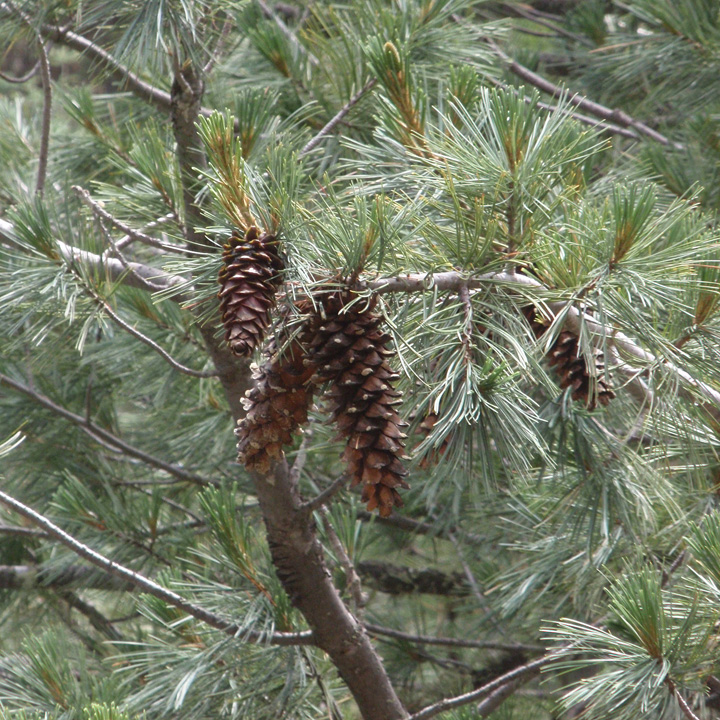|
Family: Pinaceae |
Trees or shrubs aromatic, evergreen; crown usually conic when young, often rounded or flat-topped with age. Bark of older stems variously furrowed and plated, plates and/or ridges layered or scaly. Branches usually in pseudowhorls; shoots dimorphic with long shoots and short shoots; short shoots borne in close spirals from axils of scaly bracts and bearing fascicles of leaves (needles). Buds ovoid to cylindric, apex pointed (blunt), usually resinous. Leaves dimorphic, spirally arranged; foliage leaves (needles) (1--)2--5(--6) per fascicle, persisting 2--12 or more years, terete or ± 2--3-angled and rounded on abaxial surface, sessile, sheathed at base by 12--15 overlapping scale leaves, these (at least firmer basal ones) persisting for life of fascicle or shed after first season; resin canals 2 or more. Pollen cones in dense, spikelike cluster around base of current year's growth, mostly ovoid to cylindric-conic, tan to yellow, red, blue, or lavender. Seed cones maturing in 2(--3) years, shed early or variously persistent, pendent to ± erect, at maturity conic or cylindric, sessile or stalked, shedding seed soon after maturity or variously serotinous (not opening upon maturity but much later); scales persistent, woody or pliable, surface of exposed apical portion of each scale (apophysis) thickened, with umbo (exposed scale surface of young cone) represented by a scar (sometimes apiculate) or extended into a hook, spur, claw, or prickle; bracts included. Seeds winged or wingless; cotyledons (3--)6--10(--18). x =12. Male cones in fascicles at the base of the current year's growth; female cones woody, maturing at the end of the second or third season and often long-persistent; apophysis (exposed portion of the mature cone-scale) marked by a transverse line or ridge interrupted in the center by a linear to round or quadrate, often elevated or spine-bearing umbo, or the umbo sometimes terminal; evergreen trees or shrubs with dimorphic branches and lvs, the long branches (except in seedlings) bearing only scale-lvs, from the axils of which early appear very short dwarf branches, each bearing a cluster of (1)2-5 needle-like lvs, the cluster surrounded at the base by a bundle- sheath of 1 or more membranous scale-lvs; dwarf branches eventually (after 2-several years) deciduous with the lvs; evergreen trees or shrubs; 2n=24. Nearly 100, N. Hemisphere. Gleason, Henry A. & Cronquist, Arthur J. 1991. Manual of vascular plants of northeastern United States and adjacent Canada. lxxv + 910 pp. ©The New York Botanical Garden. All rights reserved. Used by permission. |


